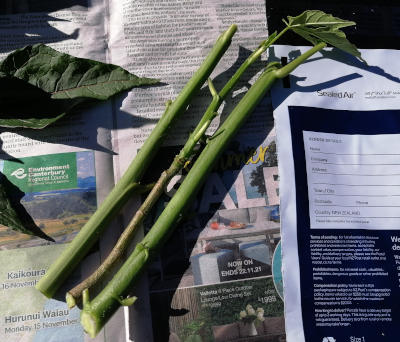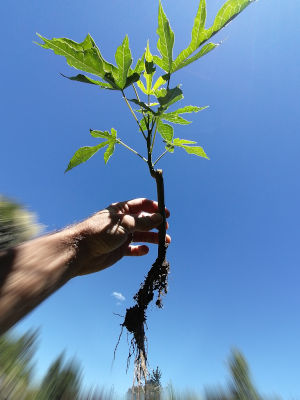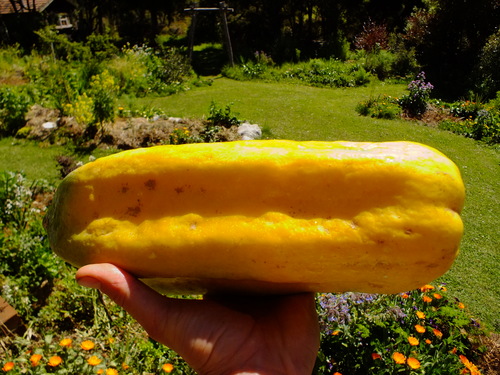Babaco cutting

Stem cuttings from mature plants growing under cover in North Canterbury
Propagate and grow your own babaco plants quick and easy with stem cuttings. Simply place the cutting 1 third into the soil (right way up) and keep damp in a sunny, sheltered, warm location. Roots will form around the bottom cut surface.
Plants are self fertile, so only one plant is required to set fruit.
High success rate and should produce fruit in 12 – 18 months.

